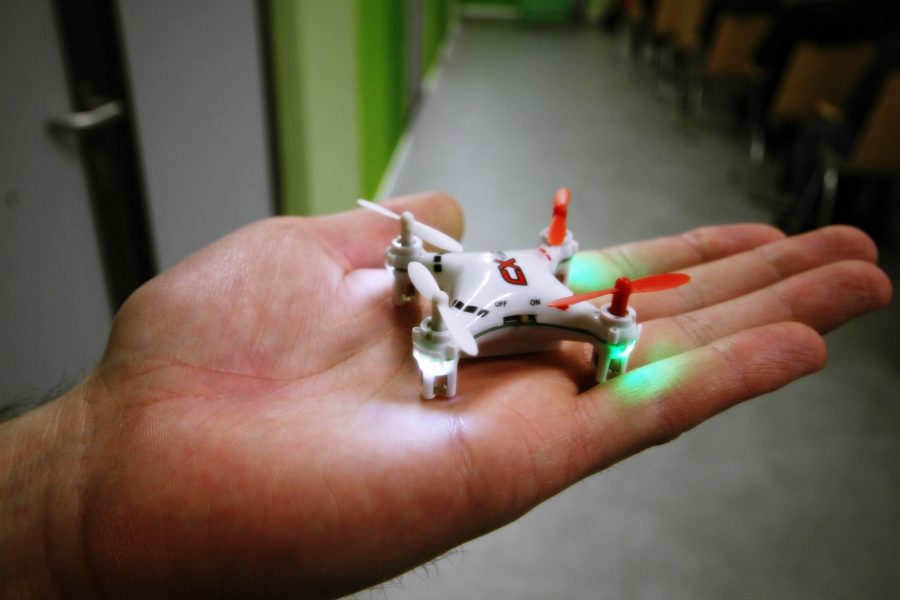This post is also available in:
 עברית (Hebrew)
עברית (Hebrew)
An innovation regarding a computer chip may lead to a breakthrough in drone miniaturization. In recent years, engineers have worked to shrink drone technology, building flying prototypes that are the size of a bumblebee and loaded with even tinier sensors and cameras. Thus far, they have managed to miniaturize almost every part of a drone, except for the brains of the entire operation — the computer chip.
Standard computer chips for quadcoptors and other similarly sized drones process an enormous amount of streaming data from cameras and sensors, and interpret that data on the fly to autonomously direct a drone’s pitch, speed, and trajectory. To do so, these computers use between 10 and 30 watts of power, supplied by batteries that would weigh down a much smaller, bee-sized drone.
Now, engineers at MIT have taken a first step in designing a computer chip that uses a fraction of the power of larger drone computers and is tailored for a drone as small as a bottlecap. The team developed a low-power algorithm, in tandem with pared-down hardware, to create a specialized computer chip.
The research was supported, in part, by the US Air Force Office of Scientific Research and the National Science Foundation.
According to MIT’s website, the key contribution of their work is a new approach for designing the chip hardware and the algorithms that run on the chip. “We are finding that this new approach to programming robots, which involves thinking about hardware and algorithms jointly, is key to scaling them down,” says one of the team leaders, Sertac Karaman, Associate Professor of Aeronautics and Astronautics at MIT.
The new chip processes streaming images at 20 frames per second and automatically carries out commands to adjust a drone’s orientation in space. The streamlined chip performs all these computations while using just below 2 watts of power — making it an order of magnitude more efficient than current drone-embedded chips.
Karaman says the team’s design is the first step toward engineering “the smallest intelligent drone that can fly on its own.” He ultimately envisions disaster-response and search-and-rescue missions in which insect-sized drones flit in and out of tight spaces to examine a collapsed structure or look for trapped individuals. Karaman also foresees novel uses in consumer electronics.
“Imagine buying a bottlecap-sized drone that can integrate with your phone, and you can take it out and fit it in your palm,” he says. “If you lift your hand up a little, it would sense that, and start to fly around and film you. Then you open your hand again and it would land on your palm, and you could upload that video to your phone and share it with others.”
Current minidrone prototypes are small enough to fit on a person’s fingertip and are extremely light, requiring only 1 watt of power to lift off from the ground. Their accompanying cameras and sensors use up an additional half a watt to operate.
“The missing piece is the computers,” Karaman says. “We need to miniaturize the computers and make them low power.”


























